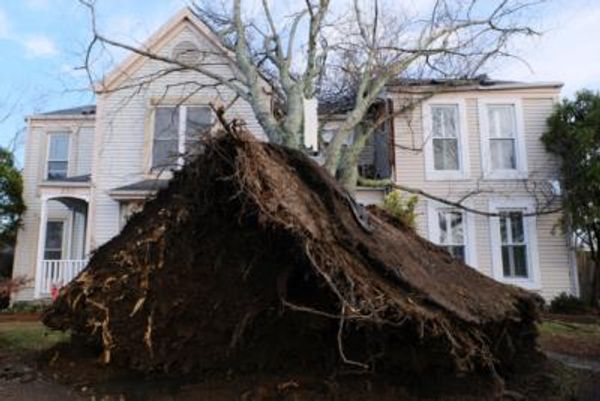Crawl spaces can often become a hidden haven for rats, leading to potential health risks and property damage. Effective rat removal from crawl spaces requires a combination of thorough inspection, proper sealing, and humane traps. Addressing this problem promptly can safeguard your home from these unwanted pests.
You might notice signs of a rat infestation, such as droppings, gnaw marks, or strange noises at night. Understanding how to identify these signs is crucial for taking immediate action. Implementing preventive measures, like ensuring proper ventilation and minimizing entry points, can significantly reduce the likelihood of rats making your crawl space their home.
Engaging professional pest control services can provide the expertise needed for successful removal. With the right strategies, you can reclaim your crawl space and enhance your home’s safety and hygiene. Keeping your living space free from rodents is essential for your peace of mind and your family’s well-being.
Identifying and Understanding Rat Infestations in Crawl Spaces
Recognizing the signs of rat infestations in crawl spaces is crucial for maintaining a safe and healthy home. Understanding rat behavior can also aid in effective prevention and removal strategies.
Signs of a Crawl Space Rat Infestation
Identifying signs of a rat infestation early on can prevent extensive damage. Look for the following indicators:
- Droppings: Rat droppings are about ¼ to ½ inch long, dark, and pellet-shaped. You may find clusters in corners or near food sources.
- Nesting material: Rats often use shredded paper, fabric, or insulation. Check for unusual accumulations.
- Gnaw marks: Inspect wooden beams and pipes for chew marks or holes. These indicate rat activity.
- Footprints or tail marks: Dusty surfaces can show footprints. Clean areas will highlight any tracks.
Monitoring these signs regularly can help you catch infestations early.
Understanding Rat Behavior and Habitats
Rats are nocturnal and tend to stay hidden during the day. Due to the dark environment, they often find harborages in crawl spaces.
They seek areas with easy access to food and water, leading them to chew through insulation and wiring.
Rats prefer to nest near warmth, making your crawl space an ideal location. Pay attention to signs of activity, especially during colder months when they search for shelter.
Being aware of their behavior and habitats will make it easier to manage and eliminate infestations effectively.
Effective Rat Removal Strategies for Crawl Spaces
The right strategies are crucial when dealing with rat infestations in crawl spaces. Effective methods include using mechanical traps and considering professional pest control solutions tailored to your needs.
Mechanical Traps and Baits
Mechanical traps are a common method of removing rats from crawl spaces. Snap traps are effective due to their quick action, while glue traps can capture unsuspecting rodents.
Placement: Position traps at entry points and along runways.
Baits: Peanut butter or sunflower seeds are attractive bait options. Check traps regularly to dispose of captured rats promptly.
Safety: Choose trap styles that minimize risks if you have pets or children. These safety precautions will help you maintain a secure environment while managing your rat problem.
Professional Pest Control Solutions
Engaging professional pest control services can provide specialized expertise in crawl space rat removal in McKinney. Experts can conduct a thorough assessment of your property.
Inspection: They identify entry points and potential nesting areas, providing tailored solutions.
Exclusion Methods: Professionals establish barriers to prevent further infestations, such as sealing holes and installing critter-proof vent covers.
Ongoing Monitoring: Follow-up services ensure your crawl spaces remain rat-free, quickly addressing new threats.
Using these professional services maximizes the effectiveness of your rat removal efforts. If you’re in McKinney, look for local pest control companies specializing in crawl space infestations for the best results.
Preventive Measures for Long-Term Control
Effective preventive measures can significantly reduce the risk of rats residing in crawl spaces. Focus on sealing entry points and making environmental modifications to create an inhospitable environment for these pests.
Sealing Entry Points
Rats are agile and can squeeze through surprisingly small openings. Inspect your crawl space thoroughly for any potential entry points. Look for gaps around utility lines, vents, and the foundation.
Preventive actions include:
- Use steel wool or mesh to fill small holes.
- Apply caulk to seal cracks.
- Install door sweeps on exterior access points.
Additionally, consider replacing or repairing broken vent screens. A thorough sealing process can significantly hinder rat access and establish a much safer crawl space.
Environmental Modifications
It is vital to create an environment that discourages rats. Start by eliminating food and shelter sources on and around your property.
Key modifications involve:
- Removing clutter in the crawl space.
- Storing firewood away from the foundation.
- Trimming vegetation near the house.
Ensure that trash bins are tightly sealed and maintain cleanliness in outdoor areas. Keeping your yard well-manicured reduces potential hiding spots. Contact Critter Stop at (214) 234-2616 for tailored solutions to keep your property rat-free. Critter Stop has a fantastic reputation and online customer reviews because it provides high-quality work and great customer service.







